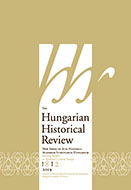Transformations of Metal Supply during the Bronze Age in the Carpathian Basin
Transformations of Metal Supply during the Bronze Age in the Carpathian Basin
Author(s): Viktória KissSubject(s): Archaeology
Published by: Magyar Tudományos Akadémia Bölcsészettudományi Kutatóközpont Történettudományi Intézet
Keywords: Copper Age; Bronze Age; metallurgy; scientific analysis; exchange networks
Summary/Abstract: This paper presents recent research questions which have been raised and methods which have been used in the study of Bronze Age metallurgy in connection with available natural resources (ores) in and around the Carpathian Basin. This topic fits in the most current trends in the research on European prehistoric archaeology. Given the lack of written sources, copper and bronze artifacts discovered in settlement and cemetery excavations and prehistoric mining sites provide the primary sources on which the studies in question are based. The aim of compositional and isotope analysis of copper and tin ores, metal tools, ornaments, and weapons is to determine the provenience of the raw materials and further an understanding of the chaine operatiore of prehistoric metal production. The Momentum Mobility Research Group of the Institute of Archaeology, Research Centre for the Humanities studies these metal artifacts using archaeological and scientific methods. It has focused on the first thousand years of the Bronze Age (2500–1500 BC). Multidisciplinary research include non-destructive XRF, PGAA (promptgamma activation), TOF-ND (time-of-flight neutron diffraction) analyses and neutron radiography, as well as destructive methods, e.g. metal sampling for compositional and lead isotope testing, alongside archaeological analysis. Microstructure studies are also efficient methods for determining the raw material and production techniques. The results suggest the use of regional ore sources and interregional connections, as well as several transformations in the exchange network of the prehistoric communities living in the Carpathian Basin.
Journal: The Hungarian historical review : new series of Acta Historica Academiae Scientiarum Hungaricae
- Issue Year: 9/2020
- Issue No: 2
- Page Range: 315-330
- Page Count: 16
- Language: English

